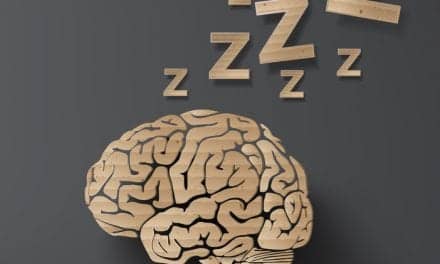As another home sleep test was recently approved for use in adolescents and more are seeking clearance, Sleep Review discusses advantages and limitations of home-based technology in patients under 18.
While understanding of obstructive sleep apnea (OSA) is on the rise and home sleep tests (HSTs) are more broadly available for adults, pediatric patients who present symptoms do not have the same options for sleep testing outside of the traditional in-lab setting. In the United States, for instance, only a few manufacturers make devices that are FDA approved for children—including Vyaire Medical’s Nox-T3 (approved in 2009 for patients greater than 2-years-old) and Itamar Medical’s WatchPAT (approved in 2016 for patients as young as 12).
“The incidence of sleep apnea increased significantly in recent years, reaching alarming rates among [the] younger patient population,” says Dafna Ashkenazi, Itamar Medical’s director of marketing. “In many cases, children and adolescents will suffer from various comorbidities that will not receive appropriate medical care as long as the underlying sleep apnea remains undiagnosed and untreated. Early diagnosis of sleep apnea in children and adolescents not only enables appropriate and effective treatment of the problem, but also precludes unnecessary medical procedures or use of medication, hence optimizing patient safety and treatment outcomes.”
An HST from SOMNOmedics, the SOMNOtouch RESP, is currently available abroad and seeking FDA approval for children as young as 2. Representatives for SOMNOmedics declined to comment while FDA approval is pending. While these devices and others like them become accessible to broader patient populations, Sleep Review spoke with experts to assess how sleep disorders present and are diagnosed in children, as well as the benefits and disadvantages of pediatric HSTs.
Contributing Factors of Pediatric Sleep Disorders
Any untreated health condition can pose more serious risks long-term so long as its symptoms go unaddressed. As such, the early development of conditions such as OSA has major implications for children.
David Gozal, MD, MBA, FCCP, co-authored a December 2015 article in CHEST about pediatric HSTs. He outlined some of the chief factors and symptoms for both parents and general healthcare practitioners to be watchful for in children with issues sleeping, focusing specifically on OSA and other sleep-disordered breathing.1
“The factors that are involved are, number one, craniofacial, such as any problematic growth of the mandible or the airway, which can lead to increased collapsibility of the airway,” says Gozal, who is also the Herbert T. Abelson Professor of pediatrics, neuroscience, and neurobiology in the department of pediatrics at University of Chicago Medicine and president of the American Thoracic Society, in an interview about his research. “The second is other anatomical factors that promote the growth of the upper airway, whether it’s in the adenoids, tonsils, or a combination thereof. Third is obviously the neuromuscular response. If we have components that lead to increased response from the dilators of the airway or the constrictors that stabilize the airway open, there is a deficiency in those reflexes and there is a propensity for upper airway collapse.”
Shalini Paruthi, MD, director of the Pediatric Sleep and Research Center at SSM Health Cardinal Glennon Children’s Hospital and a member of Sleep Review’s editorial advisory board, notes that children who have trouble sleeping may have sleep apnea but they may also have other disorders.
“When we think of sleep disorders in kids, we tend to think of them in two different dimensions. One could be an underlying medical sleep disorder. For those, we think about things that are more genetic like sleep apnea, which up to 5% of kids have. Restless legs syndrome can also be a genetic factor in kids with sleep disorders, although it can sometimes be difficult to gather accurate numbers from children who have a hard time articulating what they’re feeling in their legs,” Paruthi says.
She adds that a whole spate of behavioral factors, such as sleep-onset association disorder, can contribute to sleeplessness in children. “Kids can have any of the same sleep disorders that adults can get, and then a few that are very specific [to children],” she says.
Current State of Sleep Testing for Children
The medical community might be a bit late in terms of crafting the best approach for studying, diagnosing, and treating OSA in children, Gozal says. Having had experience with both in-lab polysomnography and HSTs for pediatric and adult patients, Gozal also described some differences, as well as reasons why home-based sleep testing (across all ages, but particularly in pediatrics) faces scrutiny.
“Ask a child to wear equipment that is irritating: Adults will control their impulsivity and may keep it in place, whereas kids will just pull the wires,” he says. “So, the probability of failure in home testing for children, no matter what kind you do, is much higher. And the younger the child, the more likely a technical failure due to their disrupting the recording system.
“The relatively high rate of failure [in home sleep testing] makes it fairly unattractive because of the effort and cost that go into something which, in principle, was supposed to reduce cost. By doing a study in a child’s home environment, supposedly you’re going to get better data because the child will be comfortable in their room, the home environment is convenient, the ‘hotel’ or ‘first night’ effect that would happen in a lab is not a factor. It’s supposed to be a better representation of the usual sleep patterns for the child.”
Gozal also highlights the cost of personnel to set up an in-home device and the meager insurance reimbursement (or lack thereof). “Complex sleep studies performed in the home are great for research, but the rates of technical failure and the costs go up as the child’s age goes down.”
Addressing some of the concerns of compliance and accuracy raised by physicians, Itamar Medical’s Ashkenazi says, “Unlike other HSATs [home sleep apnea tests], the WatchPAT eliminates the need for nasal cannulas or chest belts, which often contribute to patient discomfort, lower compliance, and sensor displacement, often resulting in high sleep study failure rates.”
At Vyaire, one of the original design goals for the Nox-T3 was to create a device ideal for pediatric sleep recording. As such, it has several child-friendly features. “The lightweight and small size makes Nox-T3 the perfect tool to diagnose sleep in pediatrics; in addition, Noxturnal software offers specific analysis of pediatric data,” says Andre Puleo, Vyaire’s global director, sleep diagnostics and therapy, adding that the Nox-T3’s incorporation of Bluetooth technology means fewer wires for the patient (child or adult) to interfere with.
Pros and Cons of Pediatric HSTs
Paruthi says the cons of HST in pediatrics outweigh the benefits at present. “Even for adults, the home sleep apnea test really is only looking at apneas,” she says. “And home sleep apnea testing is absolutely not standard of care in children. In fact, it is not recommended in children.…There is a task force that is reviewing all of the evidence for home sleep apnea testing in children, but my understanding is that there is no evidence that says we should be doing home sleep apnea testing, or that it is helpful, for children.”
Holding a differing perspective, Gozal says he is both cautiously optimistic and realistic about the future of pediatric HSTs, as he has had experience conducting successful studies that bore out the effectiveness of the devices. “We reported on a study that we conducted in Spain with our collaborators at the University of Burgos, [in which] home-based hookups by trained nurses led to a very high success rate of home respiratory polygraphy,” he says. But he adds that adjustments in scoring and evaluation of the results and the lack of sensitivity of the tests themselves could lead to the underdiagnosis of mild diseases.
Considering how surprised many parents are when they discover their children can have sleep disorders, Paruthi does say that in-lab polysomnography can be very beneficial. “I think there is a time and place for sleep studies in kids, but then again, not every child who comes in with sleep problems needs a sleep test either,” she says. “I think that’s where the clinical evaluation is really important.”
As more manufacturers seek approvals for HSTs for pediatric populations, more research is likely to be conducted and some lingering questions answered. Vyaire’s Puleo says, “Pediatric HST is a young and growing field. There is much work to be done in creating best practices, scoring rules, and guidelines for pediatric HST. We are in a great environment technology-wise to help sleep clinicians monitor and screen their patients at home, and provide them with more tools to diagnose a larger number of their patient population. ”
Clinicians are also awaiting more developments. “There’s a lot of work to be done.…It is an area that clearly merits more attention—to define the failure rate, to determine what the problems are (technical and otherwise) that exist in delivering respiratory polygraphy in the home setting, and to define the normative data and what constitutes disease, the same way we have done for polysomnography in the lab,” Gozal says. “I think this is an area in pediatrics where there is a great opportunity and one that needs to be pursued very aggressively.”
Tamer Abouras is a freelance writer and editor from Williamstown, NJ.
Reference
1. Hui-Leng T, Kheirandish-Gozal L, Gozal D. Pediatric home sleep apnea testing: Slowly getting there! Chest. 2015 Dec;148(6):1382-95.
UPDATED 4/20/17: Added information and quotes to reflect that the Nox-T3 device has been FDA approved for pediatric use since 2009. The original article stated that the WatchPAT was the only device approved in the United States for pediatric use.





The biggest hurdle of scientific based innovation in ambulatory Pediatric Diagnostic Sleep Apnea is the lack of reimbursement to this test in kids. Only PSG is covered. Until insurance companies will not find an economic path to grant access to this important options for the physicians – companies will have no incentive to innovate and create science around it.
The primary issue in peds HSAT is that if the device can be taken off, the child will take it off. Also, parents will not stay up during the night to put it back on. If it weren’t for the potential financial savings to the insurance and the financial payments to the HSAT device makers, no one would even be considering this because medically its ridiculous.